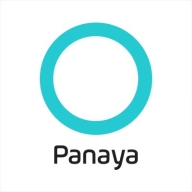

Tricentis Tosca and Panaya Test Dynamix are competing products in test automation and management. Based on comparisons, Tricentis Tosca may have an edge in support and pricing satisfaction, whereas Panaya Test Dynamix excels with comprehensive features, making it strong in overall performance.
Features: Tricentis Tosca provides robust test automation capabilities, easy scriptless test creation, and extensive test data management. Panaya Test Dynamix excels in change impact analysis, risk-based testing, and offers unique features for change management.
Room for Improvement: Tricentis Tosca could improve in seamless integration with newer technologies, enhancing user experience, and reducing setup complexity. Panaya Test Dynamix could focus on optimizing usability for non-tech users, decreasing configuration time, and reducing documentation complexity.
Ease of Deployment and Customer Service: Tricentis Tosca provides a flexible deployment model with strong customer service. Panaya Test Dynamix offers superior support, especially during complex change management processes, with a focus on customer satisfaction in post-deployment.
Pricing and ROI: Tricentis Tosca generally offers competitive setup costs and favorable ROI through efficient automation. Panaya Test Dynamix, while potentially higher in cost, provides significant ROI in environments focusing on change management efficiency, making it a solid investment for comprehensive management strategies.
Tasks that typically take ten hours are reduced to two to three hours, representing a threefold productivity gain.
The overall competence of the support has declined; previously, the support was very good, but recently, it has become difficult to reach them and get solutions, and it's taking a lot of time.
My experience has been positive; their response to emails or phone calls in tech support is fast, usually between eight to ten hours.
There is no way to mark the importance or criticality of incidents when creating them.
It covers a breadth of applications and products, demonstrating excellent scalability that I have seen in reality.
Scalability is excellent with Tricentis Tosca.
For performance and stability, Tricentis Tosca deserves a 10 out of 10.
The stability of Tricentis Tosca is rated ten out of ten. It is very stable.
I find stability issues when using the Vision AI feature; Tricentis Tosca is not very stable.
The self-healing process should automatically handle any changes in web applications; for instance, if properties change inside the application, the tool should automatically take care of it, unlike other tools such as Mabl and TestComplete that have better self-healing capabilities.
The Vision AI implementation works very slowly, affecting the speed of our work.
Moving to a cloud-based application rather than a desktop one could improve Tosca.
The pricing for Tricentis Tosca is extremely high, and I rate it as ten in terms of expense.
A yearly license costs around 20,000 euros.
For enterprise customers, the cost is manageable because it provides solutions for multiple applications they want to automate.
It allows for drag-and-drop functionality and demo automation in SAP-based applications, which can be challenging with other automation tools.
The features I find most valuable in Tricentis Tosca are that it's the easiest way to build the scripts and to do the CI/CD process; using Tricentis Tosca is very useful and easy.
The modular approach reduces scripting effort by at least fifty percent, which significantly cuts down on the script development time.
| Product | Market Share (%) |
|---|---|
| Tricentis Tosca | 14.2% |
| Panaya Test Dynamix | 1.9% |
| Other | 83.9% |

| Company Size | Count |
|---|---|
| Small Business | 23 |
| Midsize Enterprise | 24 |
| Large Enterprise | 72 |
Panaya Test Dynamix makes it easy for large enterprises to test smarter and release faster, by gaining control and visibility of every aspect of their ERP testing wherever they are.
With SAP ERP testing holding unique challenges, Test Dynamix offers provides all test management and execution capabilities in a single place , with a business process-centered approach designed specifically for SAP and Oracle testing, risk-based testing and test automation, to ensure the most efficient and effective large-scale testing possible.
Tricentis Tosca offers model-based testing that supports both technical and non-technical users through a user-friendly interface, enabling scriptless automation and seamless integration with UI and non-UI applications.
Tosca's modular approach enhances test maintenance and reuse while delivering comprehensive automation for diverse testing environments. Backed by risk-based testing and automated data management, it supports end-to-end testing across API, SAP, and desktop applications. Tosca's integration capabilities extend to environments like Salesforce, PHP webshops, and mobile apps, effectively enhancing Agile team workflows. Despite its strengths, room remains for improved reporting, object recognition, and more efficient upgrade processes. Enhancing documentation and mobile testing support could further elevate its functionality for many.
What key features does Tricentis Tosca offer?In retail, Tricentis Tosca automates inventory and transaction testing, ensuring efficient system updates. Financial services employ it for regulatory compliance through automated test scenarios in mainframe and PDF environments. Telecommunication companies utilize Tosca for API testing, aligning services across network platforms seamlessly.
We monitor all Functional Testing Tools reviews to prevent fraudulent reviews and keep review quality high. We do not post reviews by company employees or direct competitors. We validate each review for authenticity via cross-reference with LinkedIn, and personal follow-up with the reviewer when necessary.